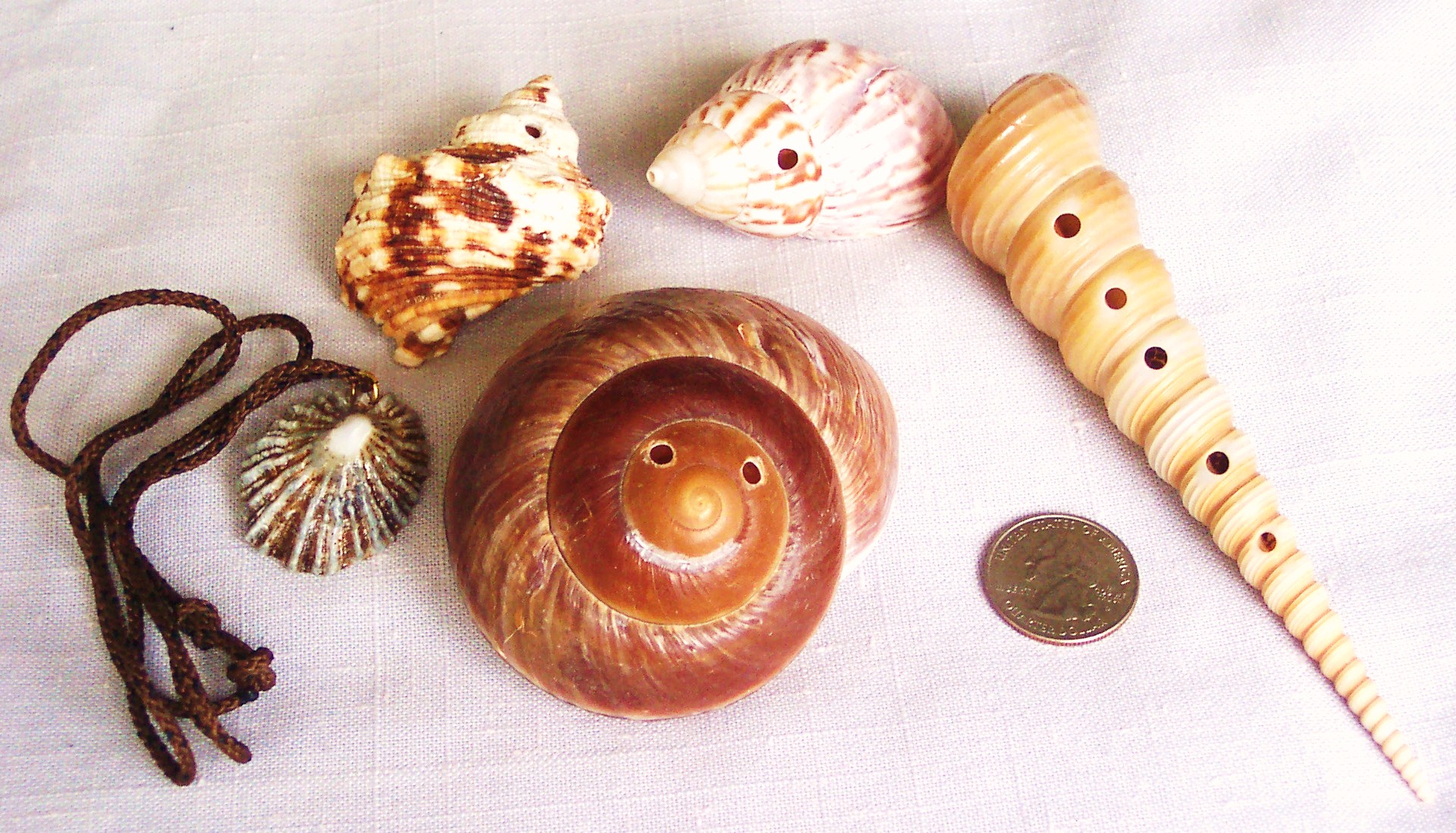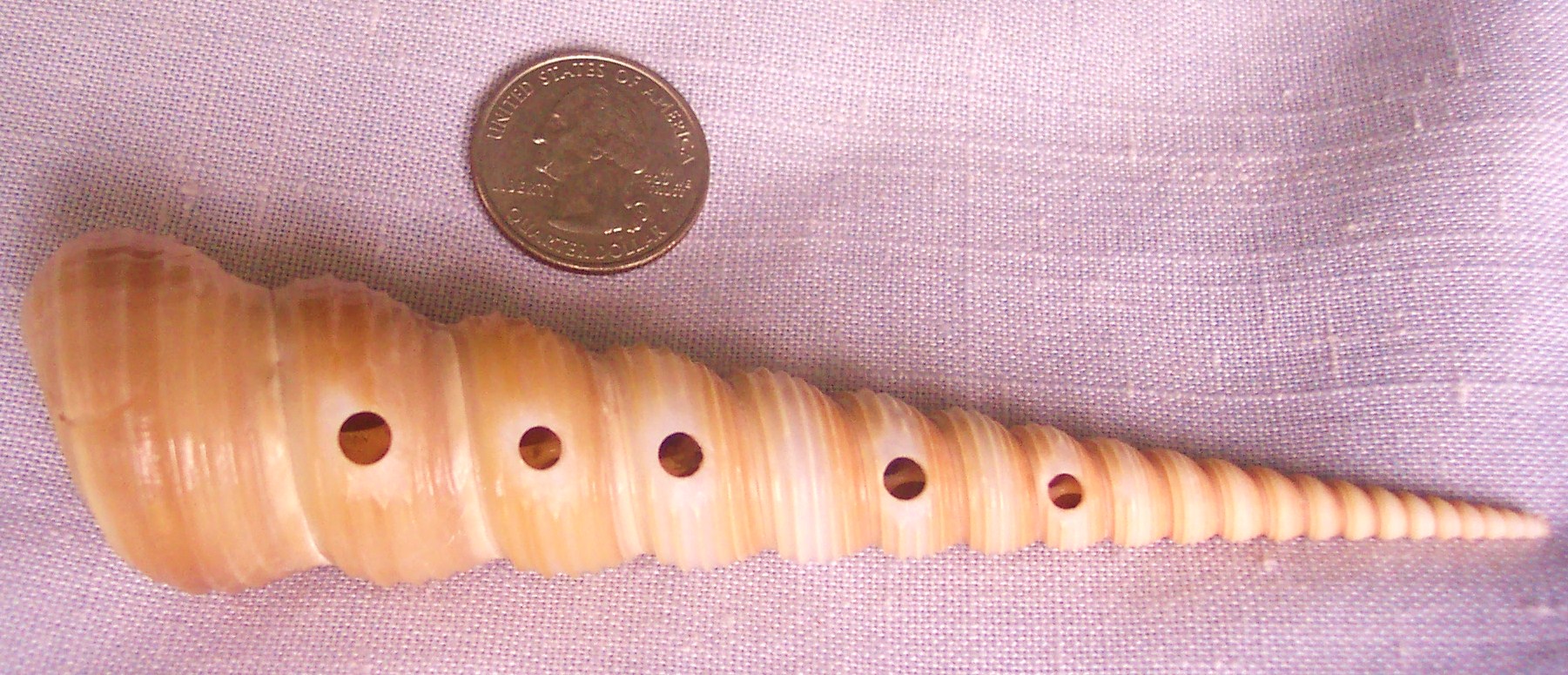Why wasn’t the seashell whistle flute discovered or made before 2003? The shape of the seashell species,Terebra Turritella, which I use to make into whistle flutes, has remained the same for millions of years. A few people comment that surely, during all that time, someone else would have discovered how to make one before I did. That is precisely what the physicists that study acoustic musical instruments thought when I presented them with my discovery in 2007.
Before Rollins College Physics Dept. began analyzing the seashell whistle flute, as a new musical instrument, they searched the world for a precedent. None was found. Why not? People have been making musical instruments out of naturally occurring objects since the dawn of time. To find a new one now, one that releases the diatonic and chromatic musical scales without the use of measurements or calculations of any sort, is unprecedented. Here’s what I think:
The snail species that makes the shell,Terebra Turritella, inhabits many coastal areas of the world’s oceans. Warm and tropical waters that surround the Philippine Islands allow the species to grow much larger than it does in cooler, subtropical waters, such as those surrounding Florida. Shells between four and seven inches long are needed to make whistle flutes in the keys of B, C, D and E and only grow that large in the tropics.
The ‘acorn cap whistle technique’ is used to resonate the air inside the hollow, tightly coiled, spiral Terebra Turritella shell. This technique is an ancient and somewhat obscure signaling skill originally employing large acorn caps as whistle devices. Oaks trees that produce large acorn caps don’t grow in the tropics. So it stands to reason that people living in the tropics, where Terebra Turritella shells grow large, never learned of the acorn cap whistle skill or applied it to their local shells. It’s a temperate climate skill of origin.
Modern high speed rotary drills and split tip titanium drill bits used for drilling small holes through ceramic tiles are relatively recent inventions. These kinds of tools have only become available to the general public during the last fifty years or so. Before that they were probably available for other industrial applications, but at higher costs than $65 now.
People drilled holes into shells prior to the invention of high speed rotary drills, but it took a long time to drill each hole by hand. One would think that the maker of the hole would have to have a very good reason for performing the time consuming task. Shells are extremely hard, crystalline objects. I suspect holes were drilled through shells for more utilitarian purposes, such as making buttons, jewelry, tools, wampum and the like.
The business of selling seashells from around the world in small ‘mom and pop’ shell shops, is a relatively recent development due to advances in the shipping industry. Now, ordinary people living in temperate climates have access to tropical seashells.
The seashell whistle flute was discovered/developed by applying the temperate climate ‘acorn cap whistle technique’ to a seashell from the tropics. A straight line of five pitch holes, following the lengthwise axis line of the shell, makes it possible to play an octave and a half of diatonic notes. No mathematical calculations or measurements are needed to accomplish this. The shell takes care of the math.
I’ve been told by physicists that the shape of the Terebra Turritella seashell is an Archimedean or logarithmic spiral. I’ve also read that the diatonic musical scale of notes is a logarithmic (or geometric) progression of frequencies. Anyone can repeat my experiments and produce the same results every time.


